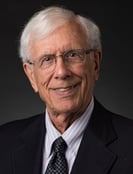UPDATE: The Uniform Bar Exam

ALMOST EXACTLY ONE YEAR AGO I blogged about Michigan’s possible adoption of the Uniform Bar Examination (“Will the Uniform Bar Exam Come to Michigan?”). The blog described the exam, its benefits, and Michigan’s slow pace when it comes to such reforms.
The UBE consists of three components developed by the National Conference of Bar Examiners: the Multistate Bar Exam (200 multiple-choice questions), the Multistate Essay Exam (six 30-minute essay questions), and the Multistate Performance Test (two 90-minute writing assignments).
The UBE allows exam takers to transfer their score to one--or more--of its 36 participating states and territories. That’s a huge advantage for many students who don’t have a job lined up by graduation or who want to establish a cross-border law practice.
Other UBE benefits include uniformity, expert question-drafting, and consistent grading. Law grads in UBE states all take the same exam (“Make the pain the same”). Experts develop the questions in an elaborate process that no single state has the resources to match. The NCBE provides a grading guide for every question and conducts semi-annual grading workshops for bar examiners to help maintain consistency among states and between test administrations.
WHAT HAS HAPPENED IN THE PAST YEAR?
In Michigan, regrettably, nothing. Another 592 law grads passed the Michigan bar exam and become eligible to practice law in ... well, Michigan.
But there has been activity regionally. Illinois implemented the UBE for its July 2019 exam. Ohio will begin administering the UBE this July. And last month a study commission created by the Indiana Supreme Court recommended that a third border state adopt the UBE.
The Indiana commission offered a novel reason: “cognitive overload.” In addition to the seven MBE topics, Indiana presently essay-tests 11 additional topics, for a total of 18. In contrast, applicants in UBE states are tested on 12 topics. “By having to study for eighteen distinct topics, as opposed to only twelve, Indiana applicants are at a distinct disadvantage vis-à-vis the applicants in the 36 UBE jurisdictions.” (Report of the Study Commission on the Future of the Indiana Bar Exam, p. 21)
Michigan’s bar exam consists of the one-day MBE and a day of 15 homegrown essay questions allotted 20 minutes each. According to its website, the Michigan Board of Law Examiners’ essay questions can test a possible 26 subjects. That’s nearly half-again as many as Indiana and more than twice as many as the UBE. Indiana’s study concluded that reducing the bar exam’s cognitive load might reduce bar-prep course costs and would likely increase the state’s pass rate.
Retired Indiana Supreme Court Chief Justice Randall T. Shepard and Court of Appeals Chief Judge Nancy H. Vaidik, co-chairs of the study commission, wrote in the Indiana Lawyer newspaper, “All in all, the shift we propose is pretty modest… What really matters is better testing in the interests of clients and more flexibility for law graduates and the enterprises that hire them.”
Similarly, I told the Indiana Lawyer, “My goal is [even more] modest. I just want the Michigan Supreme Court to appoint a study commission like Indiana has done.” Some maintain the Board of Law Examiners will initiate change in due course. But as said of generals and war, bar-exam reform is too important to leave to the examiners.
 Otto Stockmeyer is a Distinguished Professor Emeritus at Cooley Law School. Although retired from classroom teaching, he retains an active interest in helping law students succeed.
Otto Stockmeyer is a Distinguished Professor Emeritus at Cooley Law School. Although retired from classroom teaching, he retains an active interest in helping law students succeed.

